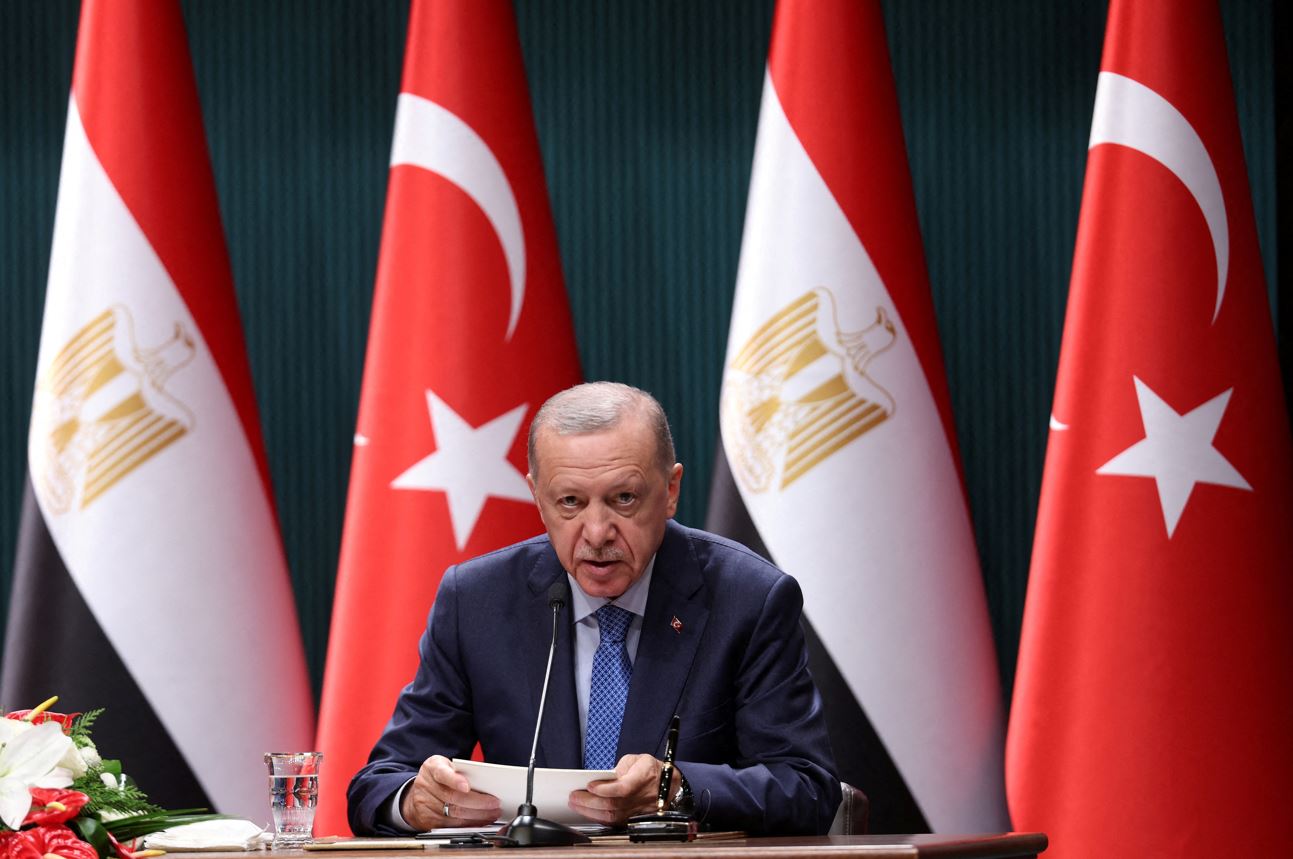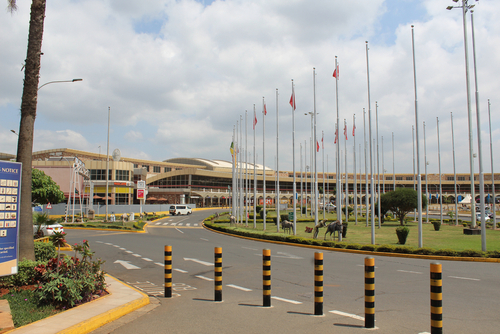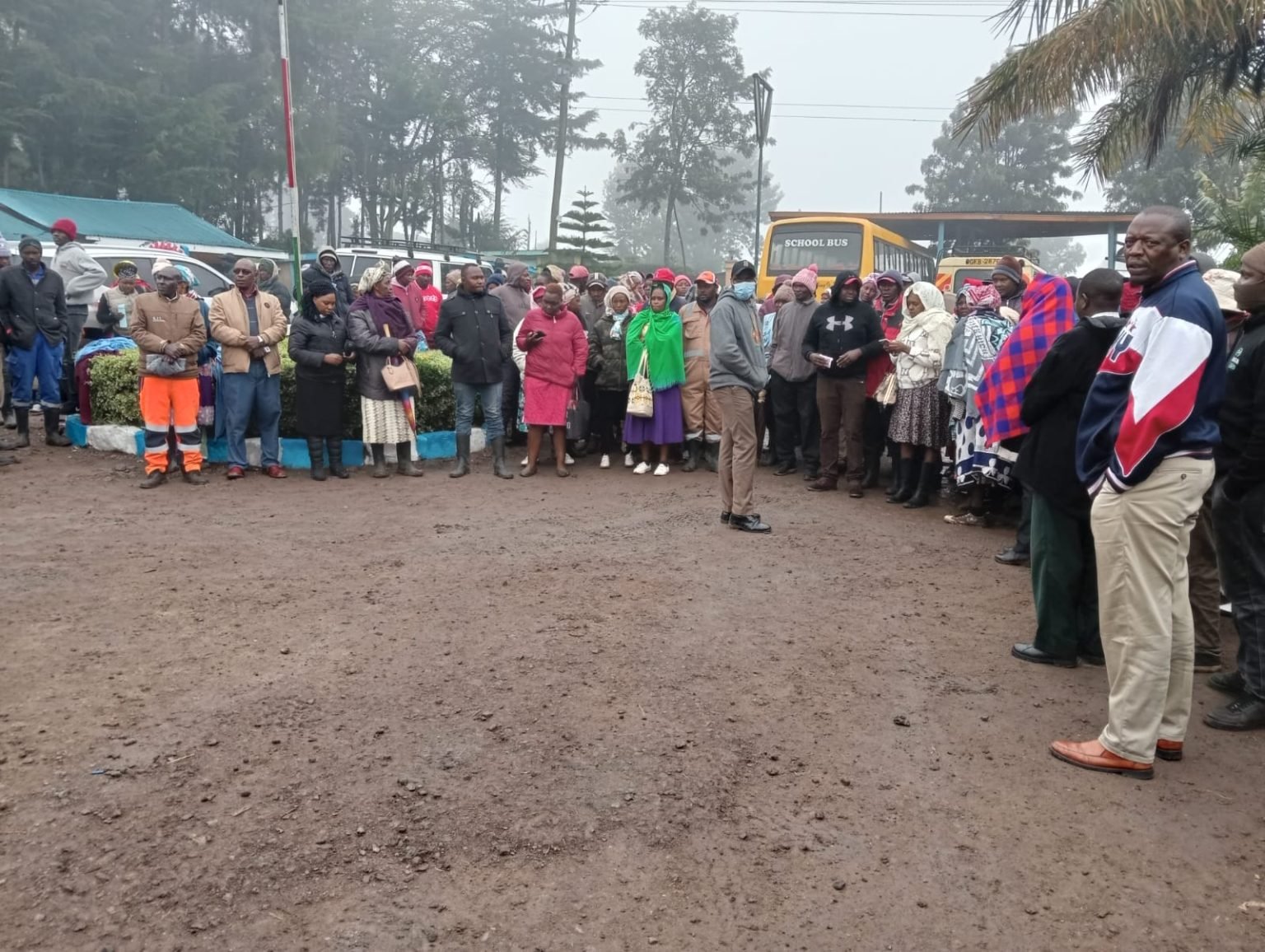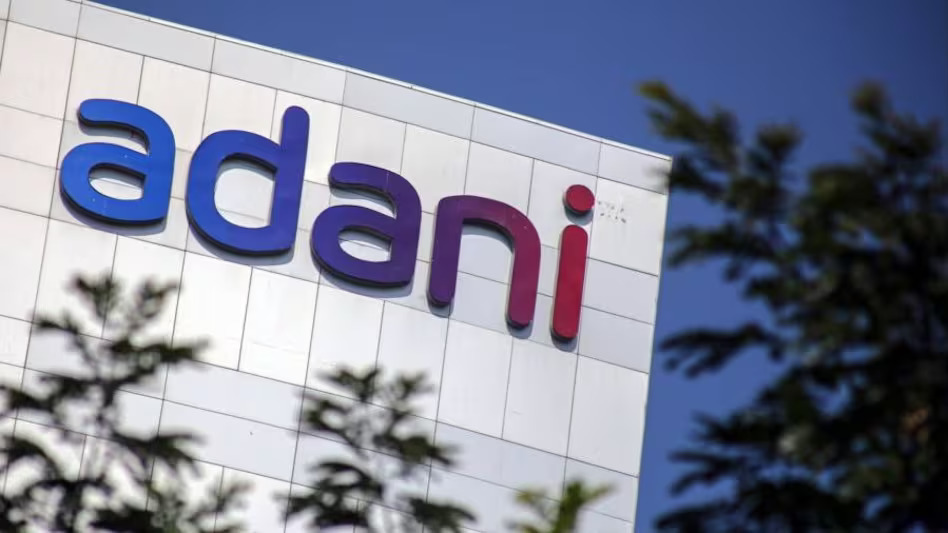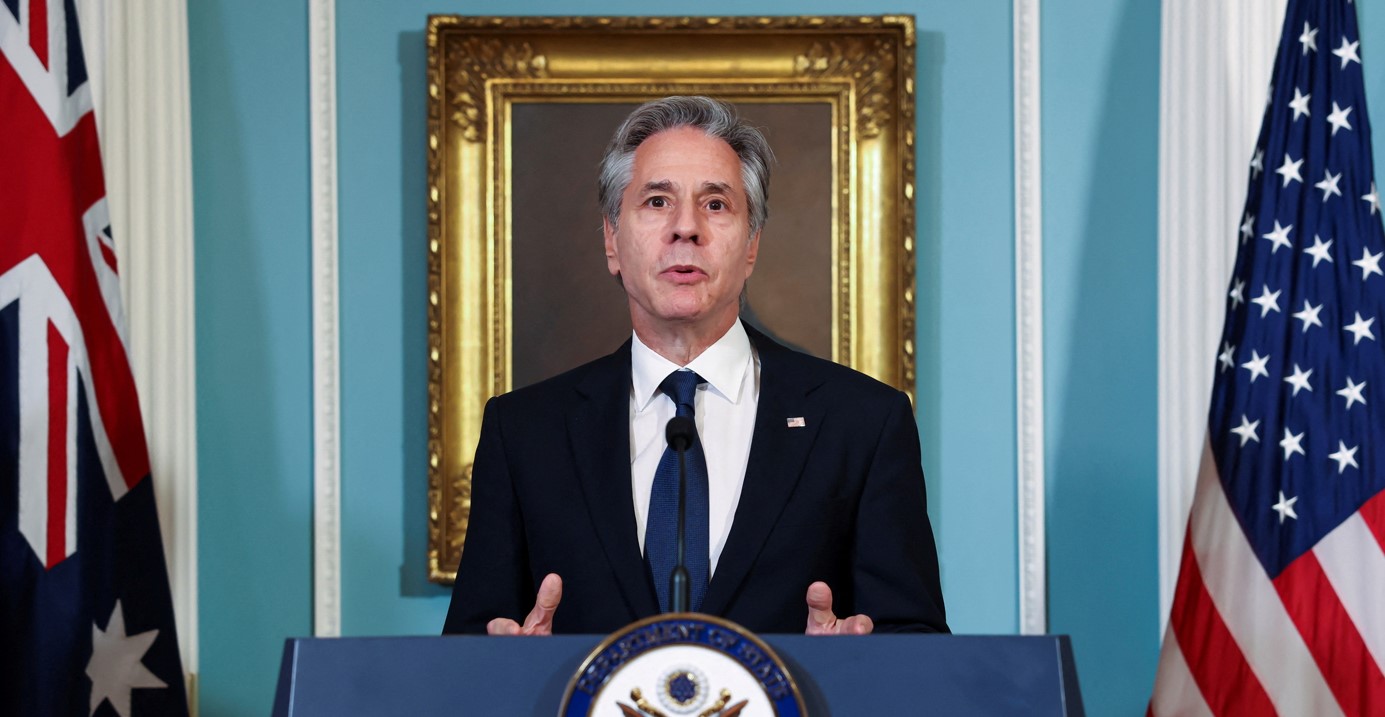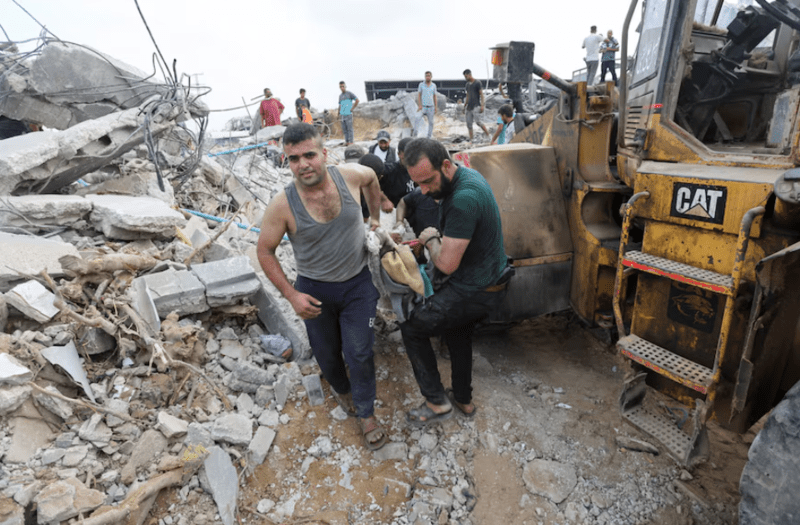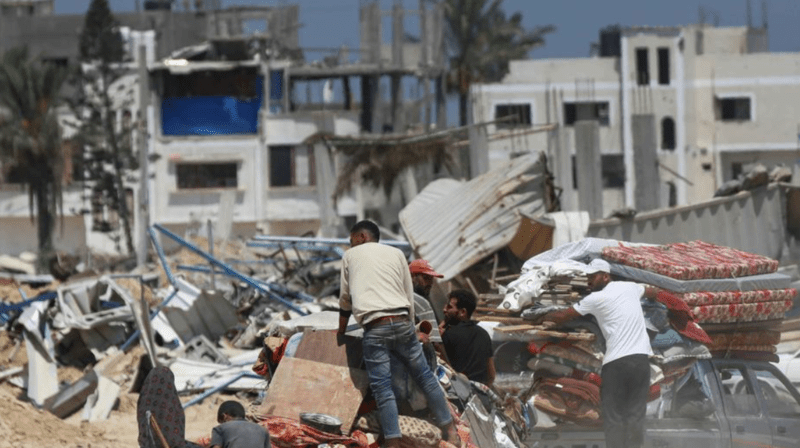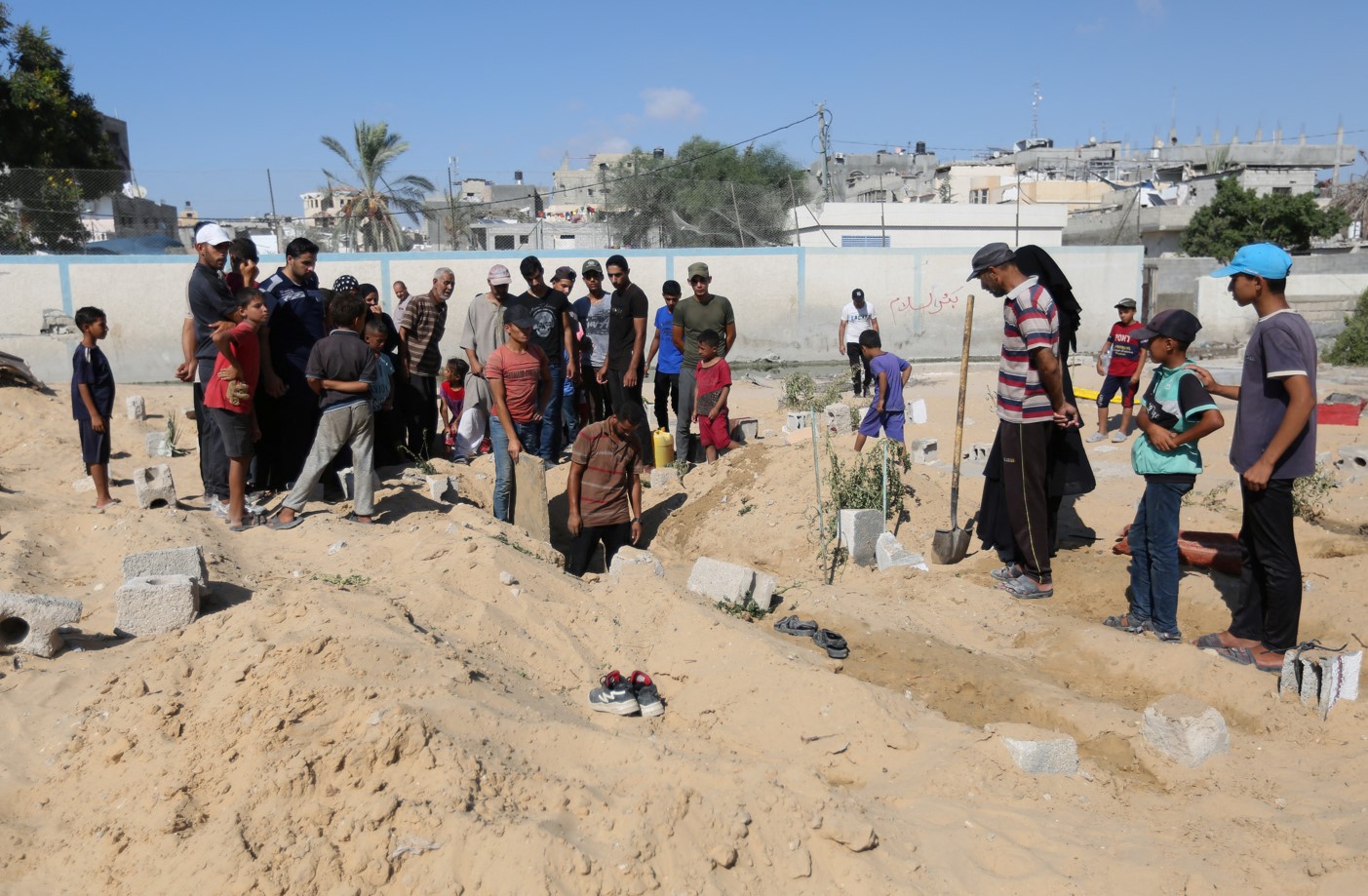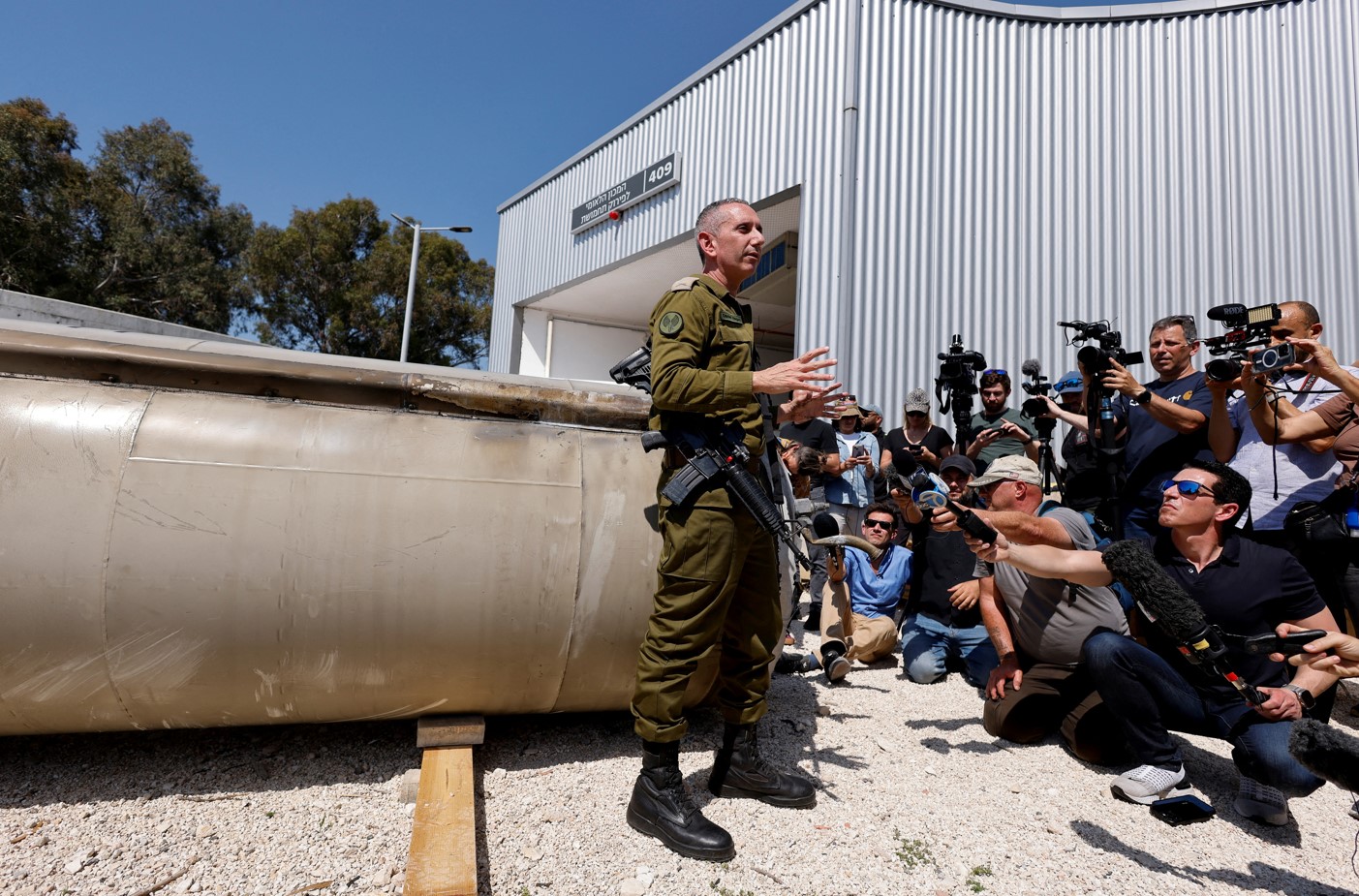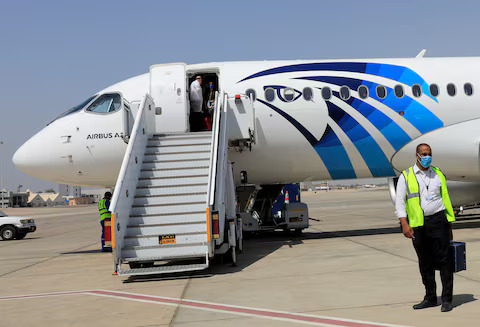Israeli gas, Kenyan tears: Israel-supplied riot control agents used against demonstrators

By Africa Uncensored |
While recent years have seen Israel exporting advanced surveillance technologies to countries across the continent, there’s a parallel trend of supplying traditional crowd control equipment such as tear gas canisters.
In June and July 2024, East Africa experienced waves of protests, notably in Kenya, where large-scale youth-led demonstrations erupted in response to the contentious Finance Bill 2024.
The demonstrations were part of a broader effort to pressure President William Ruto, with activist groups staging protests every Tuesday and Thursday and calling for his resignation due to the government’s fiscal policies and handling of the economic crisis.
Keep reading
This kind of peaceful protest is an exercise protected as a fundamental human right enshrined in many constitutions and international human rights treaties, including the African Charter on Human and People’s Rights and the International Covenant on Civil and Political Rights. This right is also protected under Kenya’s Constitution. This right is not absolute, however. Kenya’s Penal Code states that any gatherings or other meeting or procession that may threaten the peace or public order can be disrupted by the police, and the means for this disruption is not clearly defined.
Police violence however was not confined to the protests in the Nairobi Central Business District (CBD). A heightened police presence was observed in the suburbs of Githurai, Zimmerman, Pipeline, and Ongata Rongai just miles away from CBD on nights that preceded the protests, majorly police using non-lethal ammunition like teargas and water cannons inside residential areas long into the night.
Over 60 deaths related to the protests have been confirmed by the Kenya National Commission on Human Rights, some of the from indiscriminate police action in Ongata Rongai and Githurai. This further raises questions about police conduct in peaceful protests.
Footage from these demonstrations provided an opportunity to study and analyse the riot gear used by security forces, expanding our digital library research as part of the Tech Misuse and Abuse Project.
Using open-source investigation methods, we verified over 40 videos and 120 images documenting the demonstrations in Kenya, particularly around the #RejectTheFinanceBill2024 and #RutoMustGo campaigns.
These images and videos, shared on social media platforms like X (formerly Twitter), Facebook, Instagram, and TikTok, highlighted nearly four different demonstrations where tear gas was misused. Africa Uncensored and the team at Thraets, a network of open-source researchers, confirmed the location, date, and validity of these events, which were crucial for our investigation.
The connection to Israel
Our open-source revealed that security forces used tear gas grenades, most of which were manufactured by ISPRA Ltd in Israel. ISPRA Ltd specialises in developing and manufacturing devices for riot control, crowd management, anti-terror equipment, and police gear. The company’s products include tear gas grenades, anti-riot guns, and various types of ammunition, including those used by security operatives in the Kenyan protests.
ISPRA Ltd is an Israeli company founded in 1969, specialising in producing tear gas and other ‘non-lethal’ ammunition. With the tagline, ‘smart solutions for riot control,’ ISPRA exports anti-riot gear worldwide and is a major supplier to Israeli police and military.
However, they maintain a limited online presence, with minimal information available on their exports, financial status, employee count, or annual reports. Their LinkedIn page shows 84 associated employees with no posts or articles.
Many companies, such as ISPRA, do not maintain a prominent online presence, but market their products at arms fairs worldwide. To trace and identify their products, we tracked their participation in Defense Exhibitions and Arms Fairs throughout the years.
ISPRA has exhibited at numerous Arms Fairs, including Milipol in Paris since 1993, ADEX in Azerbaijan, KADEX in Kazakhstan, ShieldAfrica in 2021, and many others. At ADEX 2018, they promoted their Cyclone Anti-Riot Drone System.
This is not the first time an Israeli company has supplied equipment to an African country. In early 2001, the Zimbabwean Financial Gazette newspaper reported that Zimbabwe had sought at least 30 riot control vehicles as part of a $10 million deal with another Israeli company called the Beit Alfa Trailer Company (BAT).
The ‘non-lethal’ tear gas canisters collected by demonstrators during the #RejectFinanceBill2024 protests included impact rounds manufactured by ISPRA Ltd between 2017 and 2022.
These rounds were specifically designed to manage rioting crowds in various ways, ranging from causing non-lethal pain to fully incapacitating people without causing permanent harm. The purpose is to control both individual targets and larger groups effectively.
The equipment identified and documented by our team included products like 37/38/40 mm Anti-Riot Guns, Multi-effect grenades, and 37/38mm ammunition such as the G2020-CS/CS (MULTI EFFECT GRENADE – CS SMOKE + STUN & CS POWDER), C850-XRB (37/38MM ROUND – 24 BULLET BALLS), and C850-1CS (37/38mm ROUND – CS SMOKE), among others.
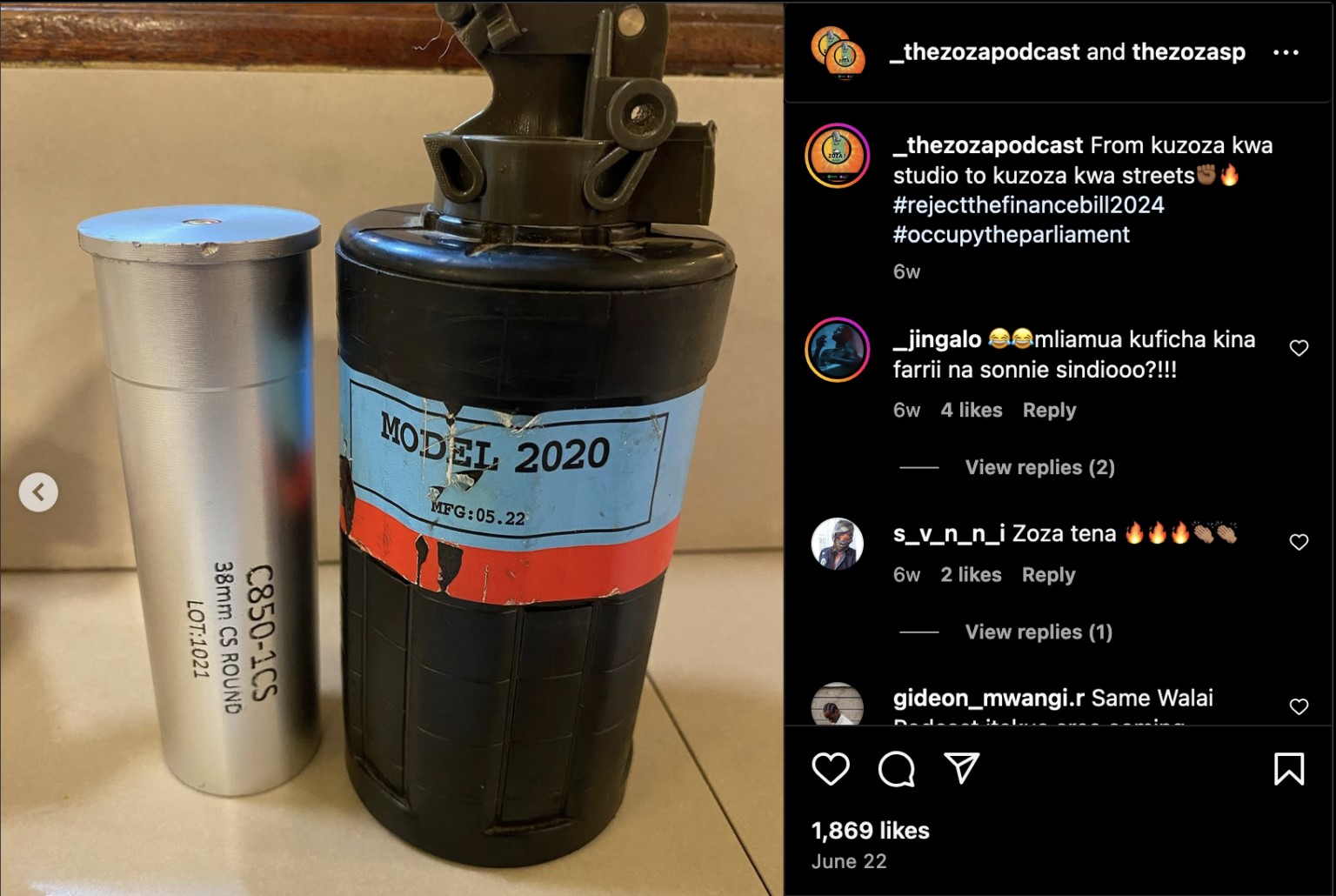 Images of teargas canisters shared on social media. (Photo: Africa Uncensored)
Images of teargas canisters shared on social media. (Photo: Africa Uncensored)
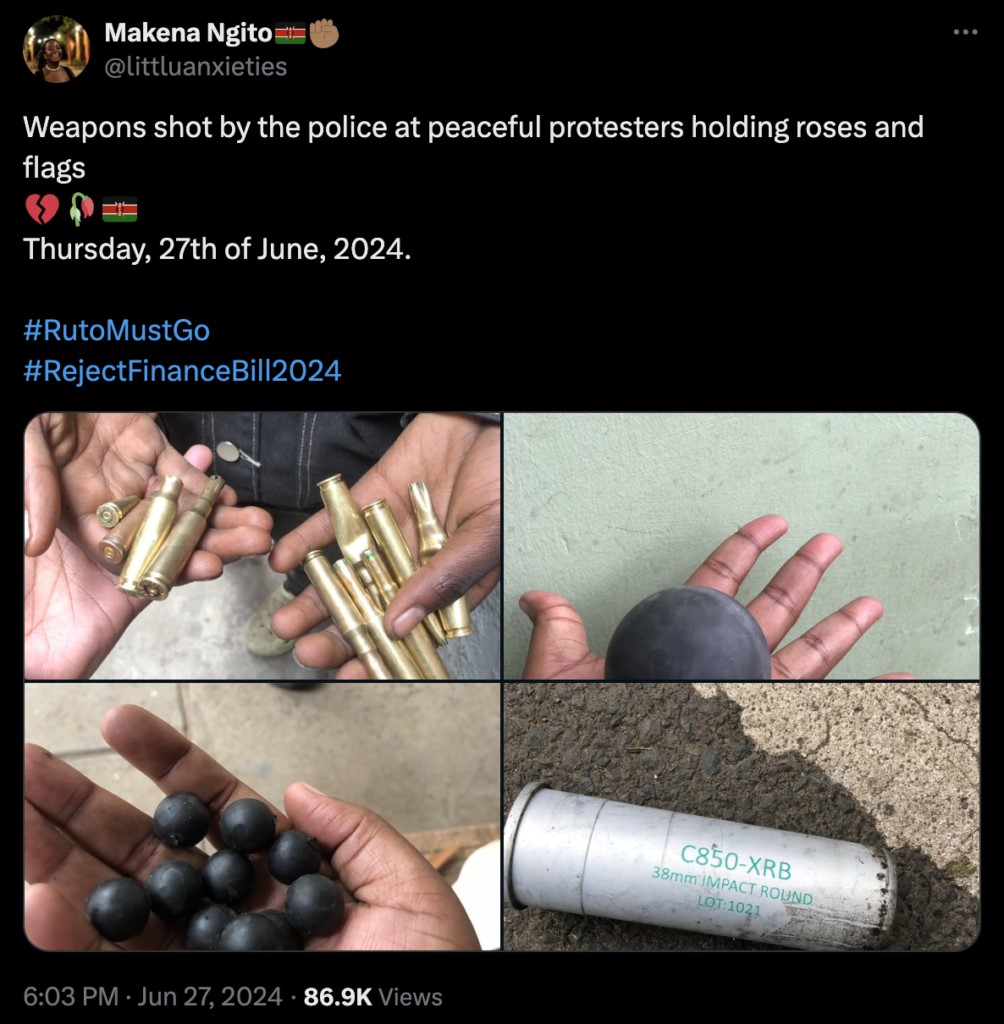 Social media post with various weapons deployed by Kenyan police during demonstrations on 27 June
Social media post with various weapons deployed by Kenyan police during demonstrations on 27 June
The images above, from the Kenyan riots, show a variety of impact ammunition rounds, with one canister on the bottom left containing the product label “C850-XRB”, which matches the labels from products produced by ISPRA Ltd as shown in the 2019 ISPRA Catalog.
Another such example is the C850-1CS, which also matches the labels from ISPRA Ltd products as shown in this Instagram post.
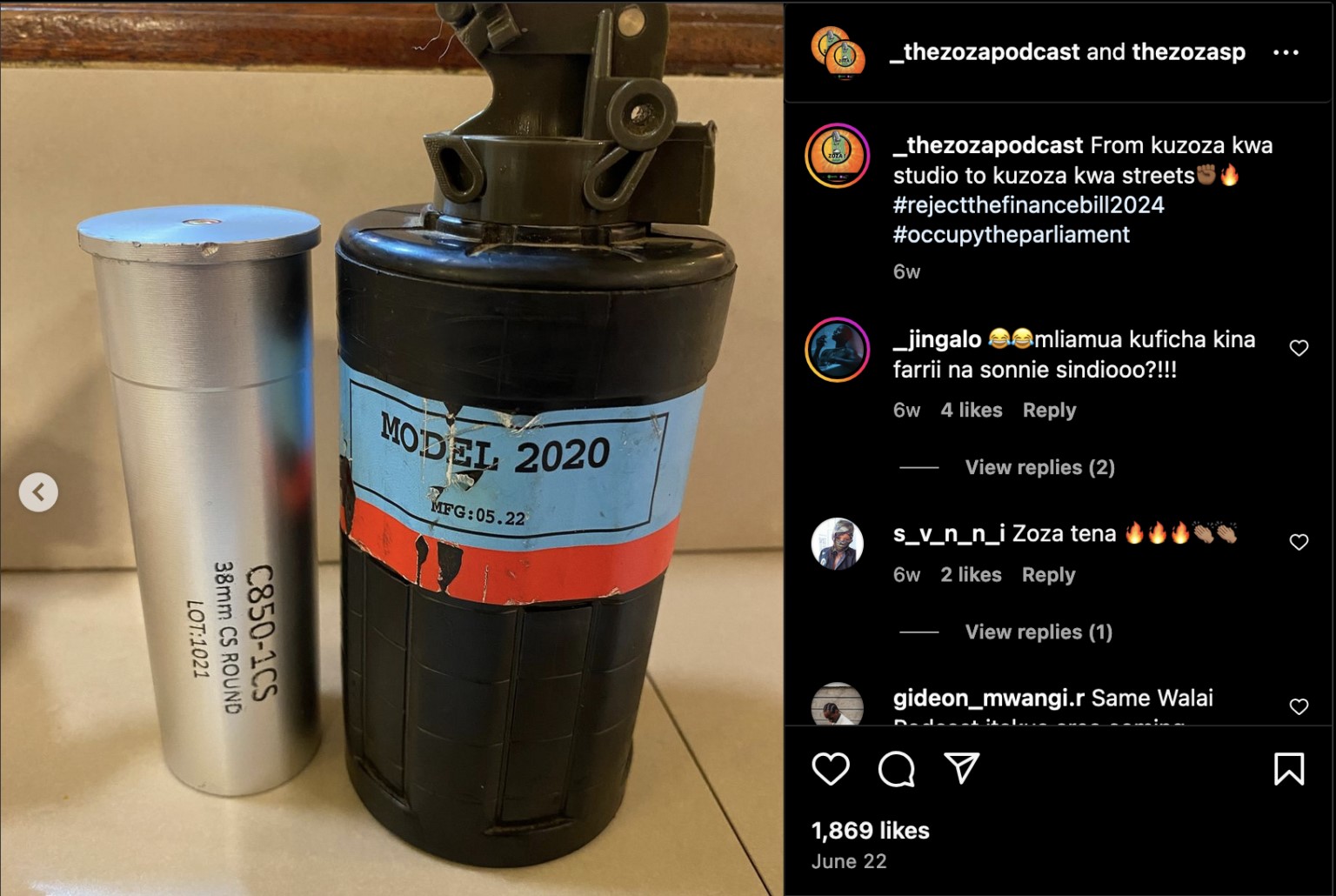
 Model 2020 canister, with the date of manufacture listed as May 2022. (Photo: Africa Uncensored)
Model 2020 canister, with the date of manufacture listed as May 2022. (Photo: Africa Uncensored)
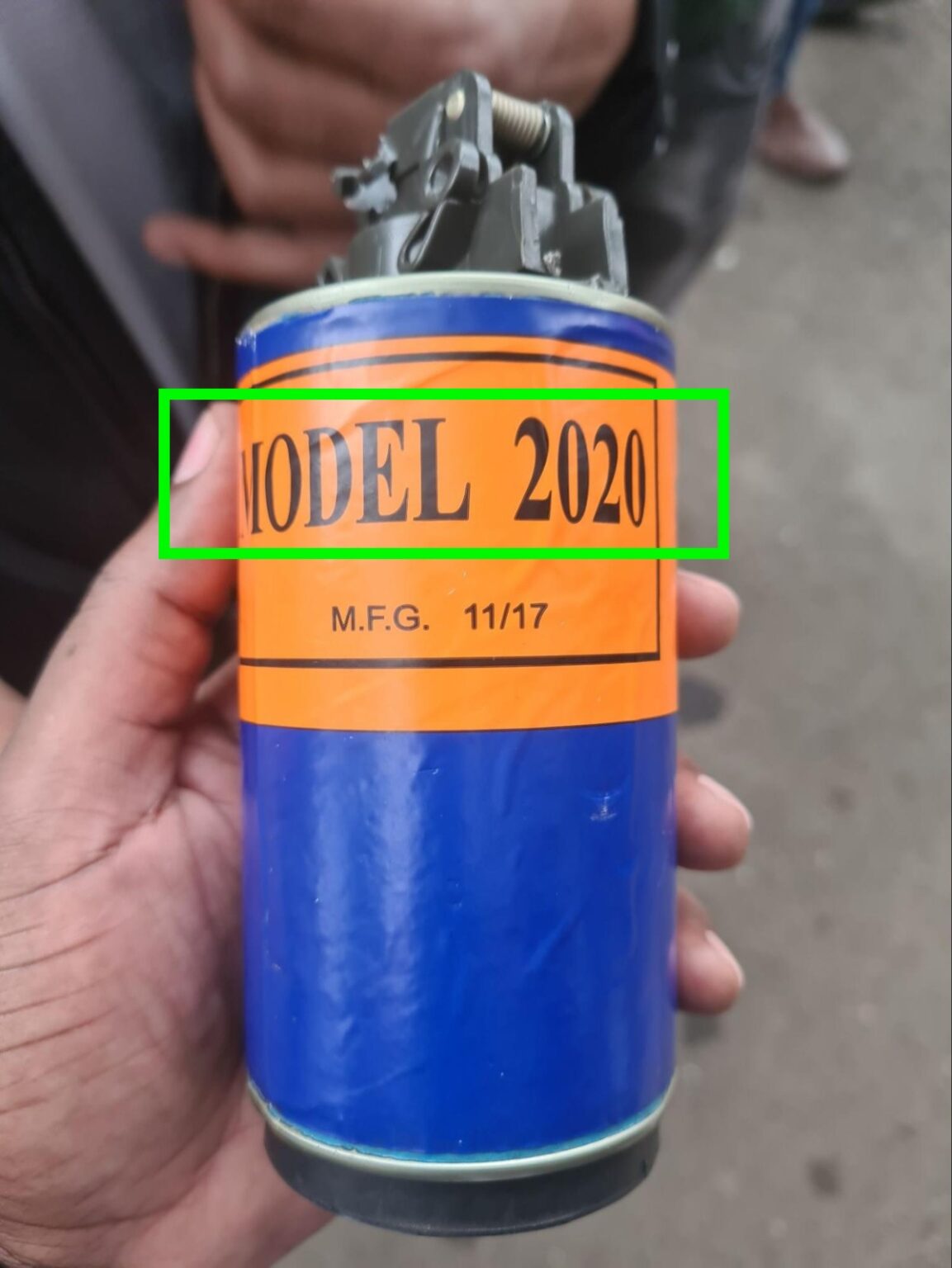 Model 2020 canister. (Photo: Africa Uncensored)
Model 2020 canister. (Photo: Africa Uncensored)
The label ‘Model 2020’ on some of the tear gas canisters that we saw in the videos and images indicates a specific model or version which reflects updates in design, formulation, or compliance with regulations, including advancements in safety features, dispersal methods, or changes in the chemical composition of agents used, such as CS gas or other irritants.
This particular model was mapped to the Multi-effect grenades G2020-CS/CS. However, some of the protesters confused the label 2020 as the expiry date like in this video shared here, which is not correct. Another example is this video from 2023 where a protester makes the same claims in Kisumu.
During the protests, Kenyans saw, for the first time, an orange-red substance used on crowds of protesters, leading to questions on what exactly it was and how potentially dangerous it might be. This substance was named “Agent Orange”, and there were several conspiracy theories shared online (here, here and here) about who was responsible for the new type of teargas.
“Agent Orange” was a chemical herbicide and defoliant used by the U.S. military as part of its herbicidal warfare program, Operation Ranch Hand, during the Vietnam War from 1961 to 1971. Manufacture of Agent Orange was ceased in the 1980s following revelations of the long-term effect of dioxins, the key substances contained in the herbicide.
According to articles and online reports including one by Nation Media Group, we believe the strange teargas is Oleoresin Capsicum (OC) spray, often deprived from capsaicin – the active ingredient in chilli peppers, which fall under the same Multi-effect grenades G4040-CS/* categories.
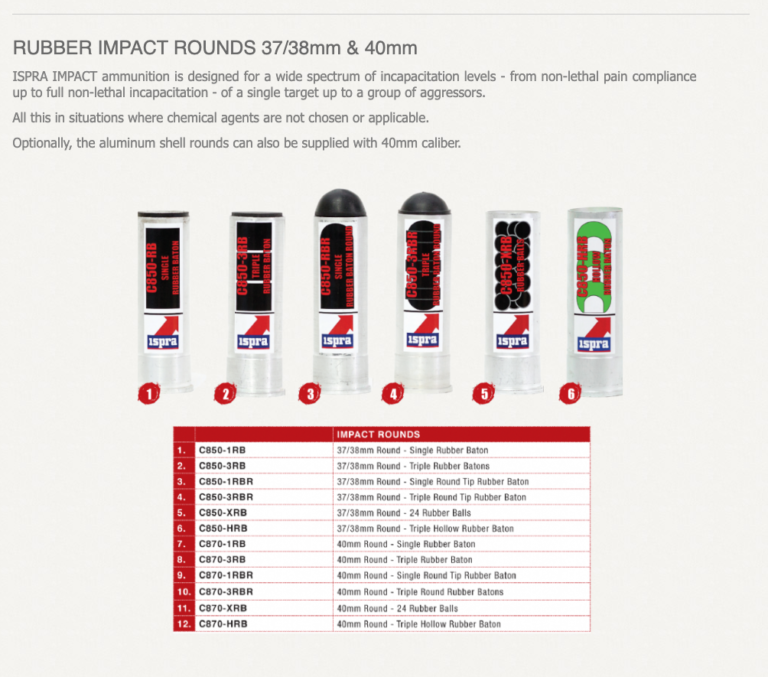 Catalogue of rubber impact rounds. (Photo: Africa Uncensored)
Catalogue of rubber impact rounds. (Photo: Africa Uncensored)
Based on photos from the #RejectTheFinanceBill2024 demonstrations in Kenya, Thraets identified canisters visually similar to ISPRA G2020 (Israel) by exact serial number and part number patterns as per ISPRA Ltd products shared in catalogues on their website.
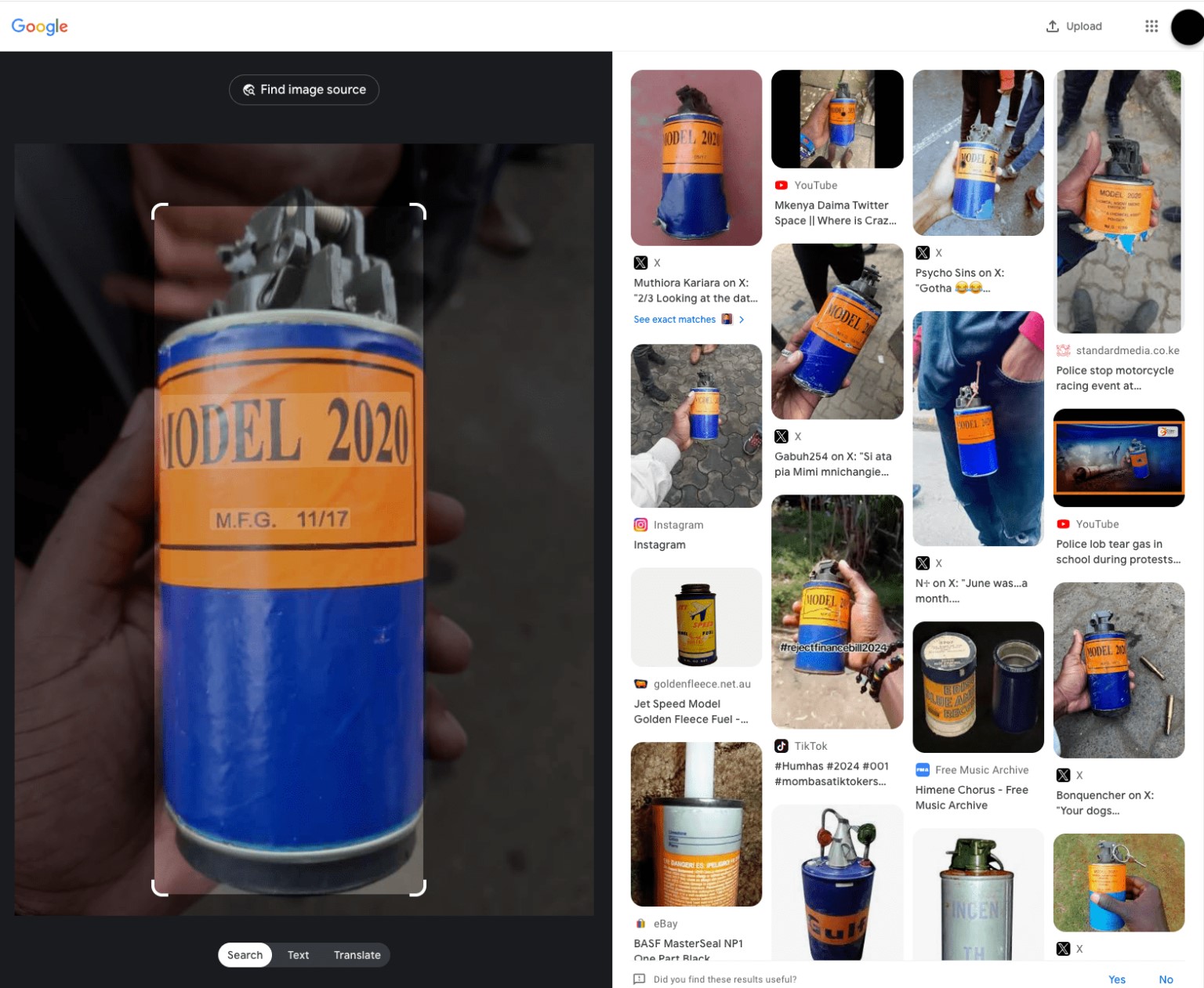 Reverse image search results of the Model 2020 canister showing other images of the same model. (Photo: Africa Uncensored)
Reverse image search results of the Model 2020 canister showing other images of the same model. (Photo: Africa Uncensored)
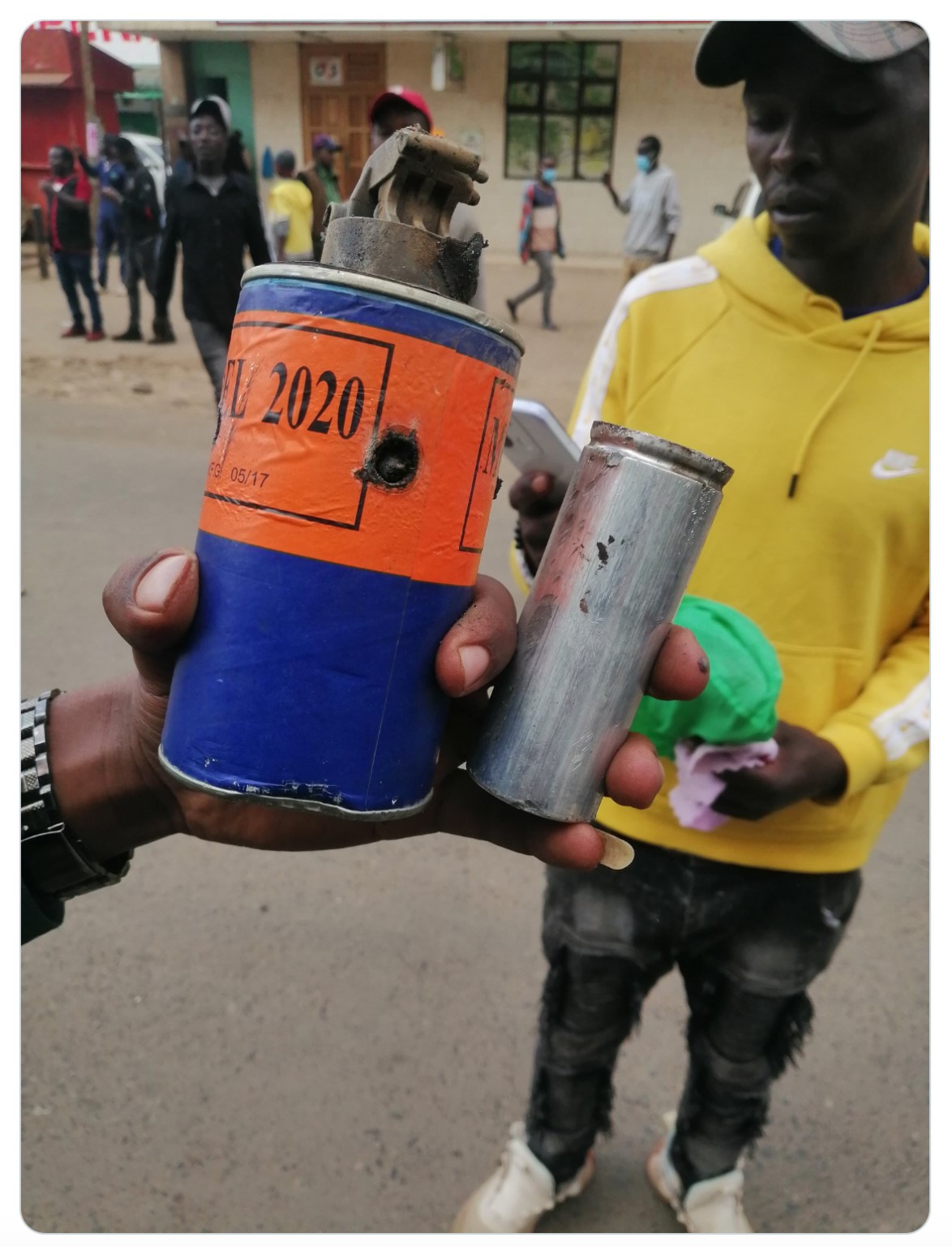 Used Model 2020 canister. (Photo: Africa Uncensored)
Used Model 2020 canister. (Photo: Africa Uncensored)
The Rise in Crowd Control Tech from Israel: Intermediaries and Questionable Deals
In 2014, the Times of Israel reported a 40% increase in Israeli weapons exports to African countries compared to the previous year, which was corroborated by Defense Ministry data. This surge likely included tear gas purchases from ISPRA Ltd., which we estimate began between 2010 and 2015. This assumption is supported by an investigation by the Kenyan Auditor-General into the 3.8 billion KES spent by the Kenyan Ministry of Interior in Kenya which is responsible for policing functions and internal security. This investigation was documented by John Ngirachu at the Nation.
The report indicated that ISPRA Ltd. received 272 million KES, with significant payments made on June 30, 2015, the last day of the financial year, into accounts at Kenya Commercial Bank and the National Bank of Kenya. Although the article does not specify tear gas, it lists arms, insurance, vehicles, and helicopter repairs among the purchases (Standard News Archive).
The Star also reported that the same mysterious account No. 1109896077 at KCB, Moi Avenue Branch, transacted over Sh8.7 billion without the authority of the National Treasury as required by law. This was the same account flagged earlier that was used to pay INSPRA Ltd.
To identify the types of teargas used by Kenya Police, Thraets research analysts searched for images tagged with ‘Kenya Tear Gas’ from as early as the 2000s on Getty Images, which is where a lot of news photos are catalogued. This analysis, which included the examination of 1,663 photos, confirmed that, before 2010, Kenyan police primarily used tear gas from the French company, Nobel Securite, based on the examination of the launchers and tear gas canisters depicted in the images. ISPRA Ltd.’s specific tear gas canisters first appeared around 2010, marking a shift in the type of tear gas used by Kenyan police.
Our research shows the transition from Nobel Securite to ISPRA Ltd happened around 2010, coinciding with the reported increase in Israeli arms exports to Africa.
Timeline of Tear Gas Usage and Protests in Kenya
2005:
- Police used tear gas during various protests, with evidence showing tear gas canisters from Nobel Securite, a French company.
- Example:2005 anti-Referendum protest
2006:
- Continued use of Nobel Securite tear gas during protests.
- Examples:2006 Nairobi Hawkers protest, 2006 pro-Uhuru Kenyatta protest
2007-2008:
- Continued use of Nobel Securite tear gas during post-Election protests.
- Examples:2008 Post-Election Violence
2010-2012:
- The first documented use of ISPRA Ltd’s Model-2020 tear gas canisters in Kenyan protests, as seen in these Getty images where a policeman is seen holding a blue and orange tear gas canister.
- Example:2012 photo from Eastleigh
2014:
- Increased visibility of ISPRA Ltd tear gas in protests.
- Example:2014 State of the Nation protest, 2014 University of Nairobi strike
2023-2024:
- Protests reignited in response to the Finance Bill, which proposed significant tax increases and other financial reforms in June 2023 and June 2024. Demonstrations continued throughout June and July, with heavy police response and the use of tear gas procured from ISPRA Ltd.
- Example: 2024 Anti-Finance Bill Protests
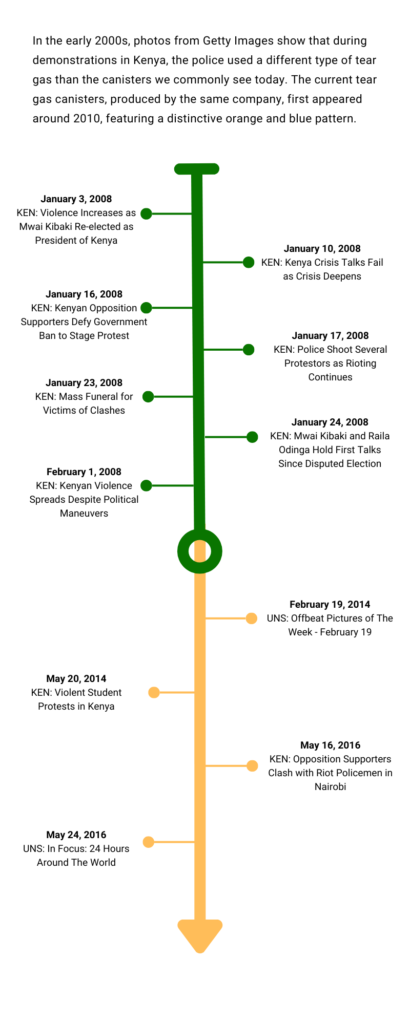 Timeline of documented cases of teargas use in Kenya, catalogued by Thraets. (Photo: Africa Uncensored)
Timeline of documented cases of teargas use in Kenya, catalogued by Thraets. (Photo: Africa Uncensored)
The consistent use of intermediaries and secondary channels by Israeli companies in Africa, often through dubious means, has been well-documented. This practice, highlighted by Yotam Gidron in Israel in Africa, exemplifies Israel’s ‘middleman’ approach to diplomacy on the continent.
Israeli companies often operate through local intermediaries to facilitate deals, a practice that has allowed certain firms to navigate the complex regulatory environments and political landscapes that would ordinarily exist for companies dealing in sensitive goods while distancing themselves from direct involvement in potentially controversial transactions. This strategy also allows them to circumvent restrictions and embargoes that might be in place.
Gidron notes that this approach has been a key aspect of Israel’s engagement in Africa, with intermediaries playing crucial roles in arms deals, security contracts, and other business ventures. The use of intermediaries is seen as a way to maintain plausible deniability and reduce direct accountability for actions taken by local agents on behalf of Israeli interests.
HSN Codes and Export Details
Using open-source tools like Volza Grow Global, we confirmed that there were at least four recent exports of tear gas to Kenya from ISPRA Israel Product Co Ltd. The platform also mentions that ISPRA’s top export market is Kenya, with top export product categories including HSN Codes 7610900000, 8421399000, and 9020000000. HSN code stands for Harmonized System of Nomenclature, a 6-digit uniform code that classifies over 5000 products. Recent exports to Kenya under these codes include:
- HSN Code 9306900000: ‘42 STEEL DRUMS PARTS FOR GRENADE CLASS 6 1 4 1 UN 1700’ which are tear gas grenades
- HSN Code 7610900000: ‘1X20 FT CNTR STC 3 UNITS PORTABLE ALUMINIUM LADDER 7 CARTONS TACTICAL GAS MASK FILTERS STEEL DRUMS PARTS FOR G808 ST GRENADE CLASS 6 1 4 1 UN 1700’
 Quantities of teargas canisters, drums, masks and filters exported by ISPRA Israel Product Company to Kenya as at June 2023. (Photo: Africa Uncensored)
Quantities of teargas canisters, drums, masks and filters exported by ISPRA Israel Product Company to Kenya as at June 2023. (Photo: Africa Uncensored)
The substantial volume of tear gas grenades and related riot control equipment being exported to Kenya suggests a continued and perhaps increased use of tear gas for crowd dispersion. This raises significant concerns about the long-term health impacts on the Kenyan population and the potential escalation in the use of force in managing public demonstrations.
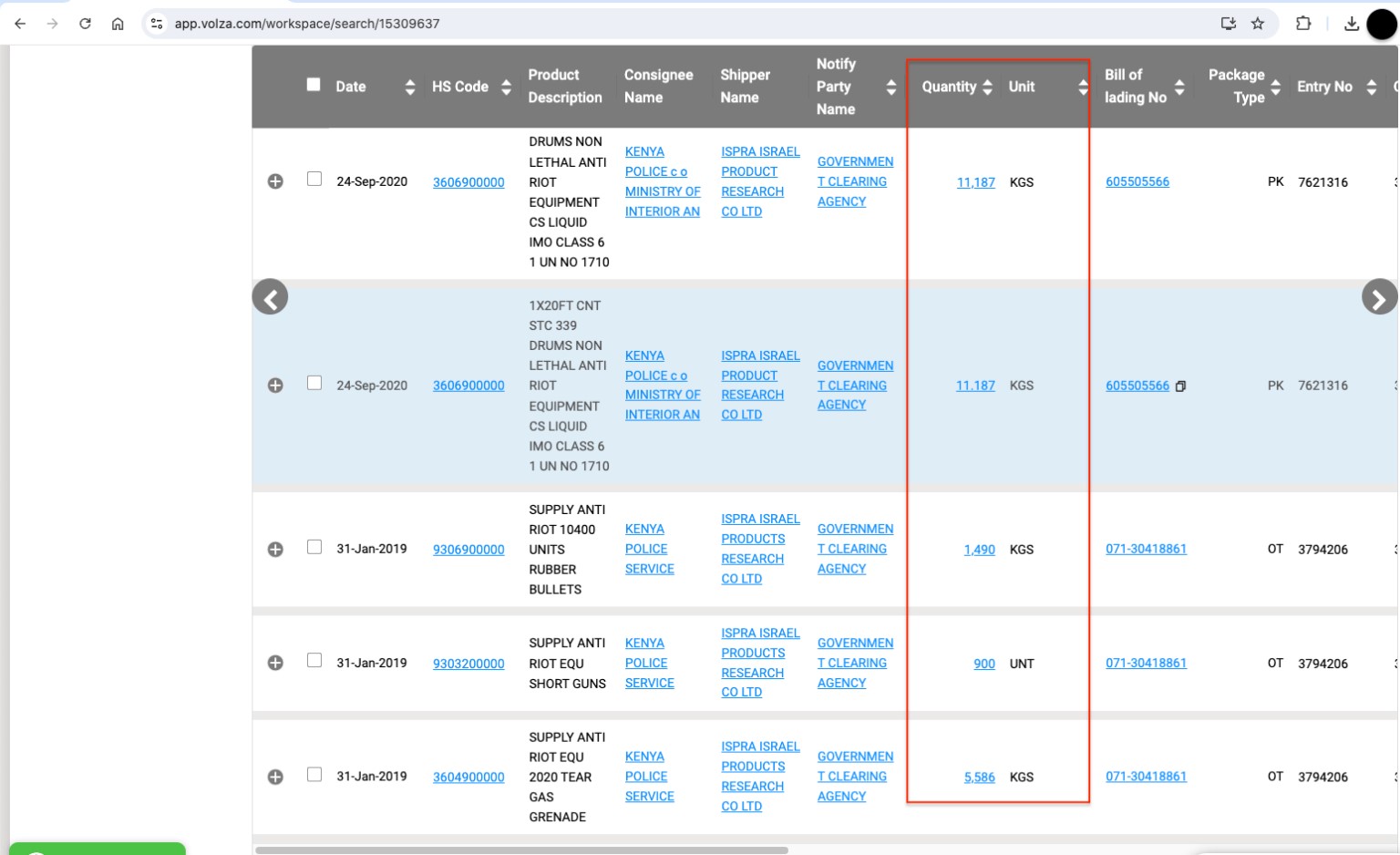 Quantities of anti-riot equipment exported to Kenya, with the consignee listed as the Kenya Police. (Photo: Africa Uncensored)
Quantities of anti-riot equipment exported to Kenya, with the consignee listed as the Kenya Police. (Photo: Africa Uncensored)
Health Impacts
According to a recent article by Nation Media, over 958 tear gas canisters were thrown in one night in Nairobi’s Githurai suburb, some of which were thrown into the houses in the suburb. This incident underscores the urgent need for more thorough investigations into the health impacts of tear gas exposure.
Tear gas, commonly composed of chemicals like CS (2-chlorobenzalmalononitrile) or CN (chloroacetophenone), is designed to cause temporary incapacitation by irritating the eyes, respiratory system, and skin. However, the health impacts can extend beyond temporary discomfort to include chronic respiratory problems, including asthma and bronchitis, temporary blindness and long-term eye damage, and severe burns and rashes upon contact with skin.
The chemicals can cause severe inflammation of the airways, making breathing difficult and potentially leading to long-term damage. This effect was noted by medics attending to injured protesters as reported by Nation on July 16, 2024.
There have also been reports of miscarriages and menstrual irregularities following tear gas exposure, and some individuals in Kenya exposed to teargas have reported effects here, here, here, here and here. The exact mechanisms are not well understood, but the chemicals may disrupt hormonal balances and affect reproductive organs.
Less well-documented, there is concern about the potential for genetic mutations caused by the chemical components of tear gas. This could have far-reaching implications, particularly for children exposed during crucial developmental stages.
Anti-riot police officers have been observed shooting at unarmed protesters with teargas canisters at close range on multiple occasions, effectively weaponising the force of the launcher and the impact of the canister to inflict injury.
Tear gas fired at close range almost directly at a protester in Nairobi CBD. pic.twitter.com/YghQijFyz5
— Cyprian, Is Nyakundi (@C_NyaKundiH) July 16, 2024
https://vm.tiktok.com/ZMrqLNV8g/
Conclusion
Israel’s engagement with African nations is evolving, but perhaps not in the expected direction. While recent years have seen Israel exporting advanced surveillance technologies to countries across the continent, there’s a parallel trend of supplying traditional crowd control equipment such as tear gas canisters. This shift to ‘less-than-lethal’ riot gear demonstrates the multifaceted nature of Israel’s strategic relationships in Africa. The expansion into supplying tear gas, as seen with companies like ISPRA Ltd., raises questions about the broader implications of Israel’s involvement in African security matters. As Israel leverages its expertise in surveillance and crowd control technologies for diplomatic and economic gains in Africa, concerns grow about the potential consequences. The deepening of dictatorships and weakening of democracy across the continent can no longer be ignored. In light of these developments, it is imperative to critically examine how Israel’s involvement in African security matters might be impacting the political landscape. The increasing use of Israeli-supplied crowd control equipment, such as tear gas, not only affects public health but also influences the dynamics of civil unrest and state responses. This calls for a nuanced understanding and rigorous scrutiny of the long-term consequences of such exports on the democratic fabric and human rights conditions in African countries.
Cataloging of these non-lethal weapons is an ongoing project. If you have any images or videos not featured in this post, we welcome your contributions. Please share them with the Thraets research team at [email protected] to help expand this important resource.
This investigation was produced by Thraets, a non-profit Civic Tech research lab dedicated to combating digital threats against truth, democracy, and social unity across the Global South, and Africa Uncensored. The Thraets team conducted the primary research, and Africa Uncensored provided editorial support.
This story was first published on Africa Uncensored. Read more here; Israeli Gas, Kenyan Tears: The Israel-Supplied Riot Control Agents Used Against Kenyan Demonstrators
Reader comments
Follow Us and Stay Connected!
We'd love for you to join our community and stay updated with our latest stories and updates. Follow us on our social media channels and be part of the conversation!
Let's stay connected and keep the dialogue going!

